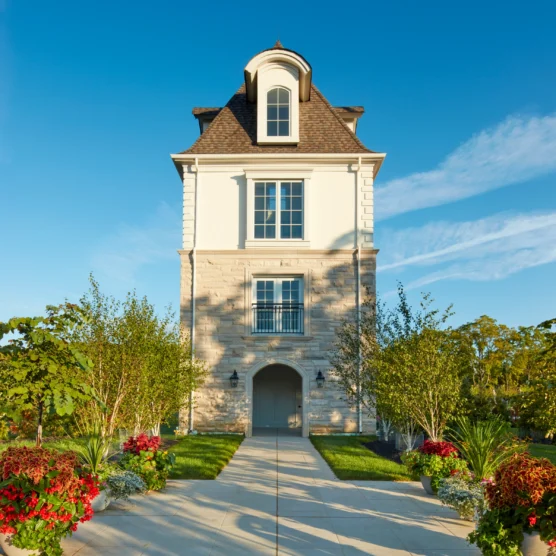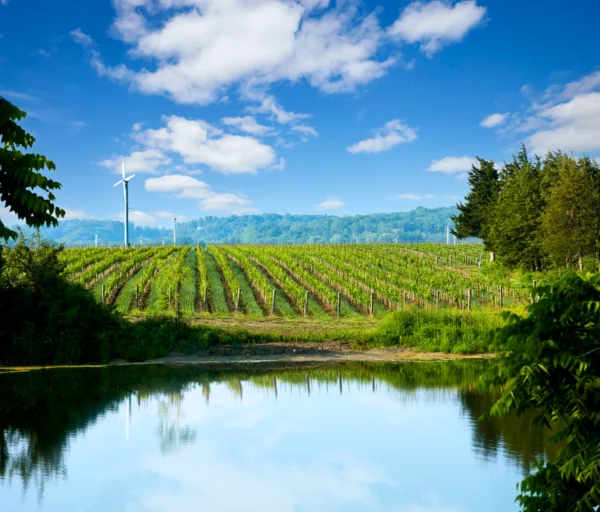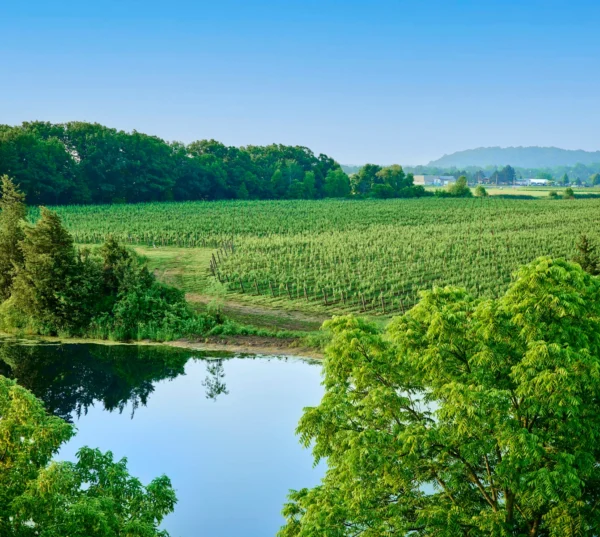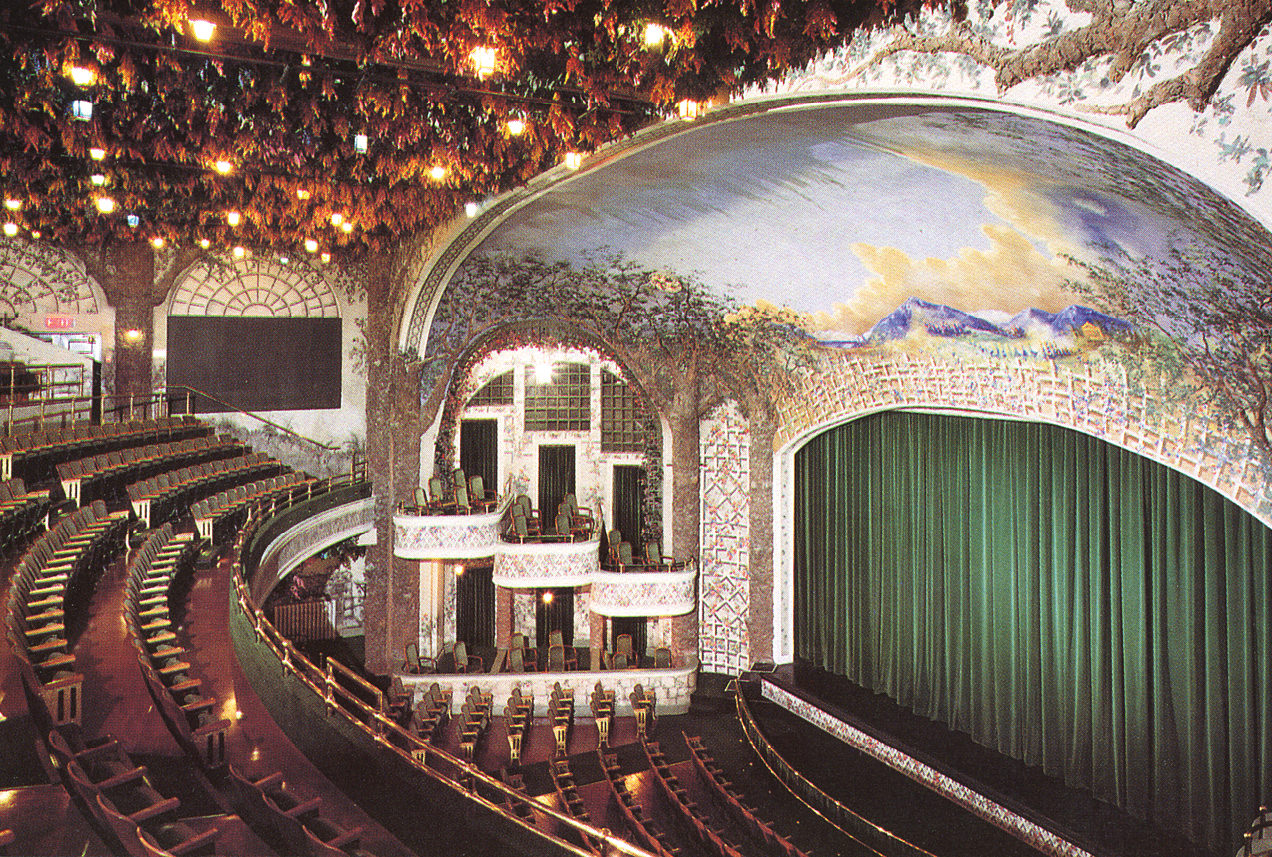Raising the Bar for Ontario Premium Wines
Dobbin Estate launches fine whites and reds.

In the world of wine, there is an unreliable relationship between price and quality. Blind tastings and wine competitions show there are excellent wines at lower price points, while some very expensive wines underperform. A recent trend toward the premiumization of wine—making high-quality wines that sell at relatively high prices because of more expensive inputs—has drawn attention to price:quality ratio. It’s gratifying to see that it’s balanced in the fine wines of Dobbin Estate, a new winery in the Twenty Mile Bench subappellation of Ontario’s Niagara Peninsula.
Open to the public in 2024, Dobbin has quickly established a reputation for its wines and for the winery itself as a destination. But what drew attention to Dobbin Estates early on is the prices of the wines, which sit on the highest rungs of Niagara’s price ladder. Rieslings sell for $60 and up, chardonnay for $75, and pinot noir and a blend of cabernets franc and sauvignon for $80. If you want a magnum, you’ll pay $120 or more for a riesling and $260 for the chardonnay.
Even allowing for the expensive exception of Icewines, these are not the highest prices ever charged for Niagara wines—Vineland Estates Meritage 1998 was released at $125—but they are up there. Some wines from Okanagan Valley are priced like this, but Niagara Peninsula wineries have tended to pitch even their icon wines lower. Yet there’s a good market for ultrapremium wines, in line with a trend of drinking less but drinking better, and Dobbin Estate is helping to clear the way for these wines in Niagara.


Dobbin Estate’s wines are backed by meticulous planning and execution in the vineyards and cellar. In 2018, Wade Dobbin, a land developer, bought 50 acres of land that included 17 acres of vines, and he called on consultants and winemakers Ann Sperling and Peter Gamble to develop a winery. Gamble and Sperling were behind a number of premium wineries across Canada, and they have their own winery (Versado) in Argentina. They were already familiar with the property Wade Dobbin had bought and immediately saw its potential. While making wine for the 2019 vintage from the existing vines, they set about transforming the vineyards.
After digging three-metre-deep pits to examine the property’s soil structure and surveying the vines, Sperling and Gamble decided to keep two acres of riesling and chardonnay and replace the rest. In 2019 and 2020, they made wine from the existing vines and grapes bought from growers in Niagara Peninsula while they transitioned to new vineyards. In 2020 and 2021, they planted 15 acres in riesling, chardonnay, pinot noir, and cabernet franc, and the 2022 wines (the current vintage available) were sourced from the estate. Other vineyard work involved installing drainage and irrigation to deal with the longer and hotter drought periods brought on by climate change.
The vines are grown organically, are densely planted, and are low yielding. Grapes are hand-harvested, and pickers carry out as many as seven sweeps through the vines to identify optimally ripe grapes. In the cellar, pressing for both red and white wines is done in basket presses, and wild fermentation is the rule, as is maturation in French oak barrels for wines aged in wood. At present, while the new vines are young, production is only 800 cases a year, but the aim is to produce 2,000 cases.

The Dobbin Estate wines currently available are from the 2019 and 2020 vintages, along with a 2022 pinot noir—the first vintage of that variety, sourced from vines planted in 2020. There are several different rieslings, including two vintages labelled “dry.” The 2019 spent 18 months on lees in stainless steel tanks and shows gorgeous mouthfeel with gripping acidity. It’s the sort of riesling you might want to cellar for a decade. The 2020 Dry Riesling sports richer flavours paired with vibrant acidity, while Dobbin Estate Chardonnay 2020, sourced from several vineyards on Twenty Mile Bench, is a compelling wine that delivers plush, layered flavours and a juicy texture.
Dobbin Estate Cabernet Franc 2020, which includes 15 per cent merlot, is a superb wine, all red fruit with top notes of tobacco and finely calibrated acidity. As for the 2022 pinot noir, from very young vines and two Bourgogne clones, it’s a very elegant effort that points to a superb future for this cuvée once the vines mature.
Beyond the vineyard, the infrastructure for wine tourism is in place, and the winery has been welcoming visitors. Its most prominent feature is a tower that provides views over the estate’s pond and vineyards and room for private wine tastings for up to 10 people. These and tastings on the patio can be booked on the winery’s website.
Dobbin Estate winery has opened at an interesting time. The consumption of wine is in decline almost everywhere, but at the same time, demand for high-quality wine is steady. With its portfolio of fine wines, Dobbin Estate can be expected to thrive in this niche environment.

Dobbin Estate Wines
Dobbin Estate Dry Riesling 2019
Dobbin Estate Dry Riesling 2020
Dobbin Estate Chardonnay 2020
Dobbin Estate Cabernet Franc 2020
Dobbin Estate Pinot Noir Estate 2022
Photographs by Steven Elphick.




